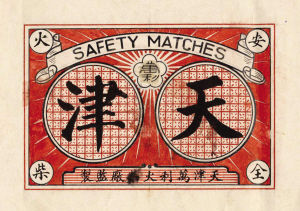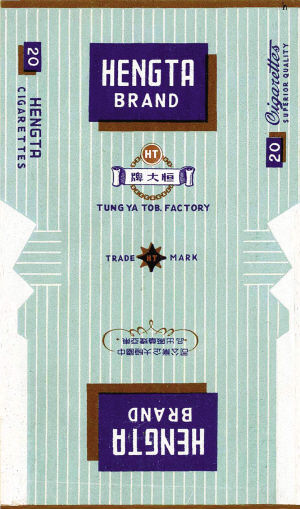
Tianjin brand match brand of Tianjin Wanli Match Factory in 1946
From 1891 to 1910, it was the founding period of Tianjin Cigarette Industry. At this stage, the tobacco companies operated by Greeks and Japanese merchants are the mainstays, while the national capitals are operated by Beiyang Tobacco Company and Linji Tobacco Company. Foreign-invested tobacco factories have a strong exotic style regardless of the pattern or the text, because the original sales target is for foreigners in China. The enterprises run by Chinese national capitals mainly focus on the beasts and auspicious patterns, highlighting the traditional cultural characteristics of the Chinese nation.
From 1911 to 1937, it was the growth period of the Tianjin cigarette industry. After the Revolution of 1911, due to the rapid economic development, Tianjin's status as an important industrial and commercial city in the north has gradually emerged. With the establishment of the East Asian Tobacco Company and the British American Tobacco Company in Tianjin, Tianjin has become an important base for the northern cigarette industry. The cigarette products of this period were mainly mechanism cigarettes. After 1934, Tianjin Yingmei Tobacco Company changed its name to Yuzhong Tobacco Company, which changed the trademark design of “Hadmen†and “Da Qianmen†and emphasized localization. From 1937 to 1945, it was the decline period of the cigarette industry. In 1937, the "July 7 Incident" broke out, and the Tianjin national tobacco industry after the fall was severely hit. The Japanese invaders rations cigarette production and sales, and all cigarette factories are included in the company, which in turn monopolizes the market, causing many ethnic cigarette companies to close down. After the outbreak of the Pacific War, there were only two large enterprises in the Tianjin cigarette industry—the Suizhong Tobacco Company and the East Asian Tobacco Company managed by the Japanese military. They mainly produced the “Chengrongâ€, “Xuguangâ€, “Hua Dao†brand cigarettes and East Asia. Cigarettes such as "No. 16", "Ji Jin" and "Shenwu".
From 1945 to 1949, it was a tortuous period for the cigarette industry. After the victory of the Anti-Japanese War, due to the shortage of domestic cigarette commodities, a large number of American cigarettes flooded into China, and cigarette companies followed the design style of foreign cigarettes. The European and American cultures were very strong. With the restrictions imposed by the National Government on imported materials and the opposition of the media to the westernization of domestic product trademarks, the design of cigarette labels began to trend toward nationalization from content to form.

Evergrande brand cigarette trademark of China Evergrande Enterprise Co., Ltd. in 1949
Convenient folding for long battery life.
fold
Jiangsu Anywhere Mobility LTD. , https://www.annelectricscooter.com